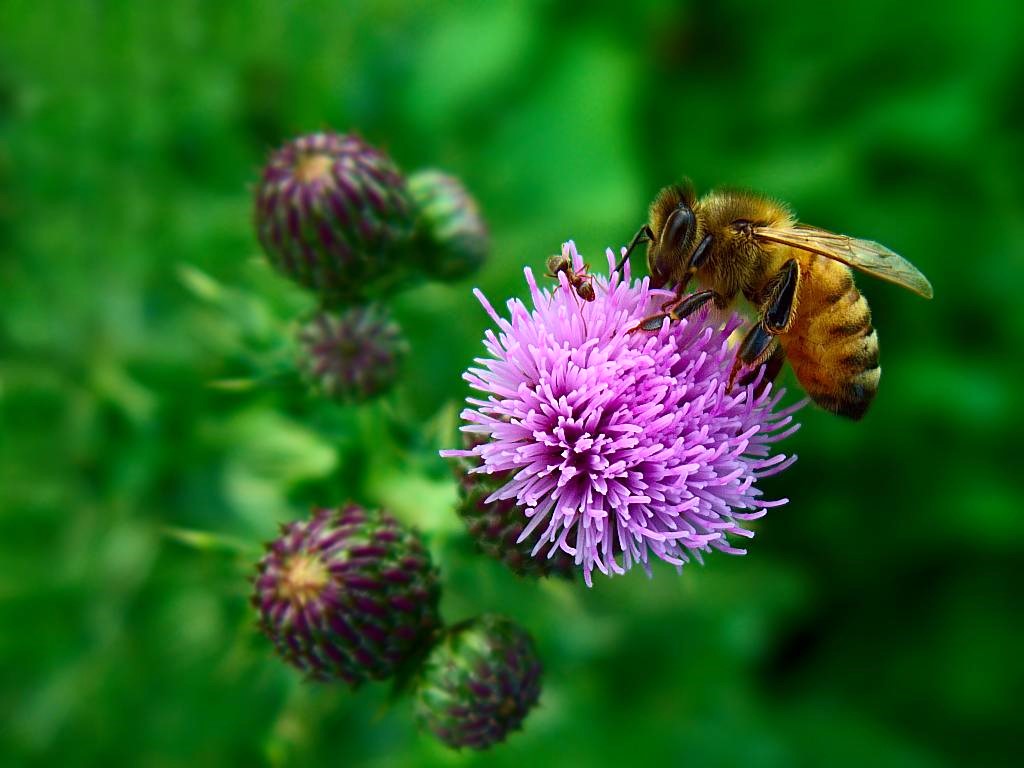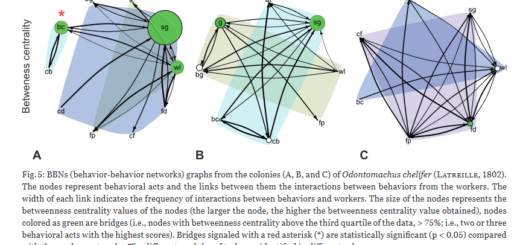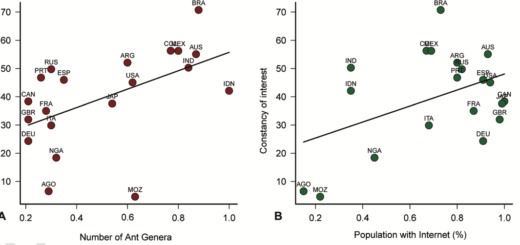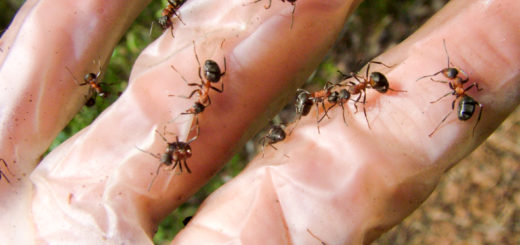Ants as hosts of honeybee viruses
In their new review article “Occurrence of honey bee (Apis mellifera) pathogens in ants (Hymenoptera: Formicidae): a systematic review” , Tiritelli et al. investigated occurrences of known viral honeybee pathogens in ants. Here, Lumi Viljakainen summarizes the study’s main results and highlights potential learnings for all social animals under pathogenic threat.
Review by Lumi Viljakainen.
Edited by Alice Laciny and Salvatore Brunetti


The COVID-19 pandemic has starkly reminded us that viruses can sometimes jump across species boundaries, leading to significant impact on their new hosts. Monitoring these pathogenic spillover events is crucial, not only for human health but also for the well-being of all living organisms to mitigate the detrimental effects pathogens may have on new hosts that have not yet evolved immunity against them. This is what Rossella Tiritelli, Giovanni Cilia and Donato A. Grasso did in their review article “Occurrence of honey bee (Apis mellifera) pathogens in ants (Hymenoptera: Formicidae): a systematic review” by meticulously examining scientific literature for known honeybee pathogens that have also been detected in ants.

The study discovered that nine out of eleven honeybee pathogens detected in ants were RNA viruses. Notably, five of these viruses – deformed wing virus (DWV), Kashmir bee virus (KBV), acute bee paralysis virus (ABPV), chronic bee paralysis virus (CBPV), and Moku virus – can replicate or cause symptoms in several ant species. This ability to infect translates to a potential threat to ant populations, although there is no concrete evidence yet of large-scale negative impacts. Importantly, ants may also act as virus reservoirs, potentially causing spillback to honeybees.
While the focus of this review was on pathogenic viruses, it’s important to remember that viruses can sometimes benefit their hosts, as seen in some parasitic wasps.
Detecting viruses and determining their replication in hosts relies on identifying virus-derived nucleotide sequences, i.e. their genomes. The most comprehensive way to screen a sample’s virome is to extract DNA or RNA and sequence it using modern techniques. Another approach is to amplify known regions of a virus genome to quantify the presence and abundance of specific viruses. The first method is useful for surveying all viruses present in a sample at a particular time, while the second is more cost-effective for studying known viruses. Both methods were employed in the studies reviewed.
Sequencing provides valuable information about the evolution of virus genomes. Generally, some level of sequence divergence is expected when a virus switches hosts. Interestingly, for DWV and CBPV, identical or nearly identical sequences were found in ants and honeybees. This suggests that these viruses can infect multiple host species without changing their genetic code, a finding that could be crucial for understanding their infection mechanisms. Conversely, significant sequence divergence might indicate adaptation to a new host. High variability within host species can suggest a high virus replication rate, as the RNA-dependent RNA polymerases used by RNA viruses lack proofreading ability, leading to frequent errors.
Given the vast ecological importance of ants, it is essential to investigate more broadly how viruses affect their populations and how they are transmitted both within and among species. This research could illuminate virus tolerance and transmission in animals with highly organized social structures and sophisticated behavior-based social immune defenses – perhaps something for us to learn for the next pandemic.





Recent Comments